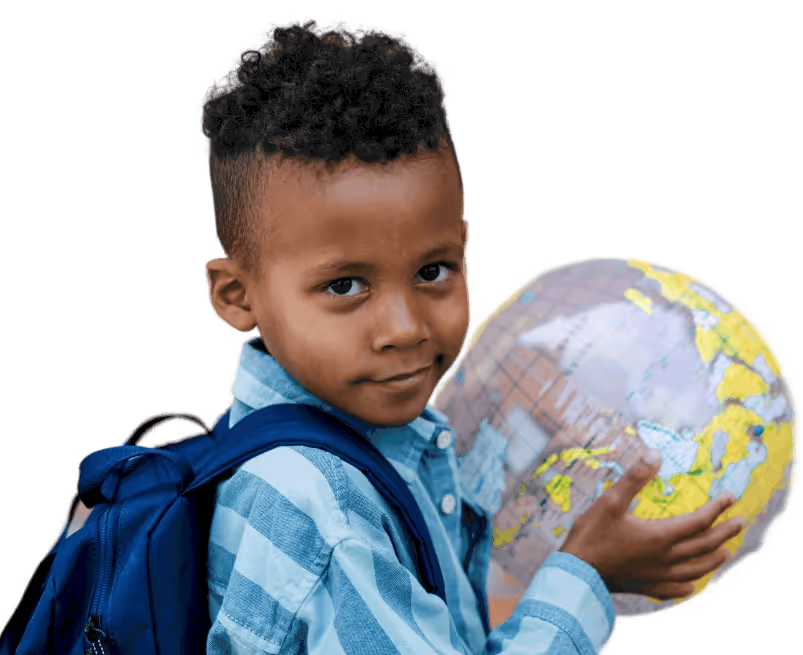About Autism
Identifying autism early can make a world of difference in your child's development. With the proper support and therapies, children with autism can develop the skills they need to thrive at home, in school, and beyond.

What is autism?
Autism spectrum disorder (ASD) is a neurodevelopmental condition that affects how people learn, act, and interact with others. Children with ASD may have challenges with social interactions, such as making eye contact, communicating verbally and nonverbally, and understanding social cues. They may also have specific, intense interests or engage in repetitive behaviors. In some cases, children with ASD may unintentionally hurt themselves.
Autism spectrum disorder is an umbrella term that includes a diverse range of signs and symptoms and can affect people differently. Some people with autism may require significant, daily support. However, many people with autism can live independent lives with minimal support.

How common is autism?
Autism is relatively common. According to the Centers for Disease Control and Prevention (CDC), approximately 1 in 31 children in the United States age 8 and younger are diagnosed with autism spectrum disorder. Boys are four times more likely to be diagnosed with autism than girls. Autism rates are consistent across racial, ethnic, and socioeconomic groups.1
The number of autism diagnoses has grown over the years. This is partly because people are more aware, doctors have better tools to diagnose, and the definition of autism has expanded. As a result, more children are being identified and getting the support they need!
Early signs of autism
Spotting early signs of autism can help families get the support they need sooner.
Autism can show up in different ways, often becoming noticeable when a child is still very young. Autism spectrum disorder looks different from person to person. According to the fifth edition of the Diagnostic and Statistical Manual of Mental Disorders (DSM-5), the guide doctors use to diagnose behavioral health conditions, common signs and behaviors of autism may include:
Social challenges:
- Difficulty understanding social cues or nonverbal communication, like facial expressions and gestures
- Challenges with forming and maintaining relationships, including making new friends
- Limited interest in sharing experiences or emotions with others
Certain communication behaviors:
- Delayed speech or language development
- Repetitive use of language, such as repeating words or phrases
- Difficulty initiating or sustaining conversations with others
- Limited use of gestures or facial expressions to communicate
Restricted and repetitive behaviors:
- Engaging in repetitive movements or activities like hand-flapping and rocking
- Becoming upset by changes in routine
- Intense focus on specific topics or objects, often excluding other interests
Sensory sensitivities:
- Hypersensitivity or hyposensitivity to certain sensory inputs, like loud noises and bright lights
- Preference for specific sensory experiences, like certain textures or sounds
- Feelings of anxiety in response to change and new environments
Motor coordination challenges:
- Difficulty with fine or gross motor skills, like tying shoelaces, writing, or riding a bike
Developmental milestones by age
Autism might look different depending on your child’s age.
How your child communicates, behaves, learns, and moves says a lot about whether they are meeting appropriate developmental milestones.
Developmental milestones: Skills or abilities most children can do by a certain age. They help parents and doctors understand how a child is progressing compared to the majority of children their age.
The following are typical developmental milestones by age:
18 months
- Looks to see if a caregiver is nearby, helps with getting dressed, and points at objects.
- Uses a few words and follows simple directions, like “Give it to me.”
- Imitates chores and engages in basic play, like pushing a toy car.
- Walks independently, scribbles, and tries to feed themselves with fingers or a spoon.2
2 years
- Notices when others are upset and looks to adults for guidance in new situations.
- Uses simple two-word phrases, like “More milk.”
- Points to objects in books, waves, and blows kisses.
- Holds objects with both hands, runs, kicks a ball, and walks up stairs.3
3 years
- Notices and joins other children in play.
- Engages in two-way conversations, asks “who,” “what,” “where,” “when,” and “why” questions, says their first name, and speaks clearly most of the time.
- Draws circles, strings items together, dresses partially, and uses a fork.
- Calms down within 10 minutes after separation from a caregiver.4
4 years
- Engages in pretend play, seeks out playmates, comforts others, and adapts behavior based on the setting.
- Forms sentences of four or more words, repeats parts of songs or stories, discusses daily activities, and answers simple questions.
- Recognizes colors, predicts story outcomes, and draws a person with three or more body parts.
- Catches a ball, serves food with supervision, unbuttons buttons, and holds writing tools properly.5
5 years
- Follows game rules, takes turns, answers questions about books, and recognizes simple rhymes.
- Helps with simple chores like matching socks.
- Counts to 10, uses words to talk about time, and writes or recognizes letters.
- Buttons clothing.
- Hops on one foot.6




